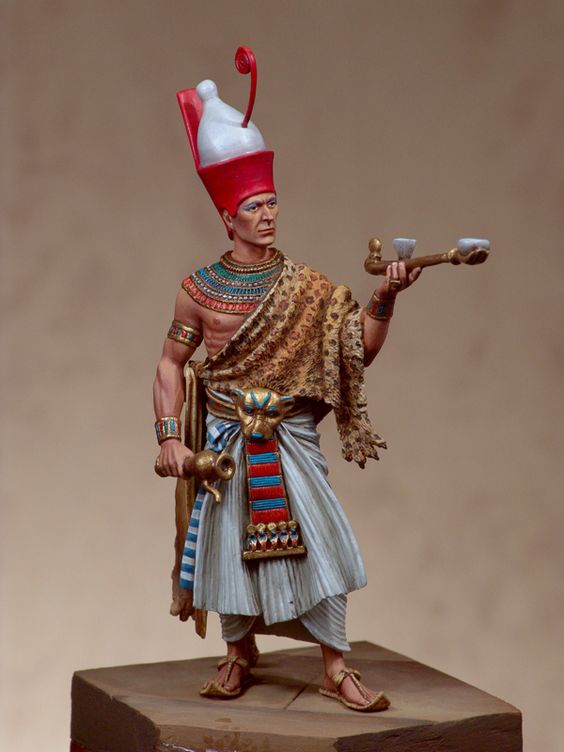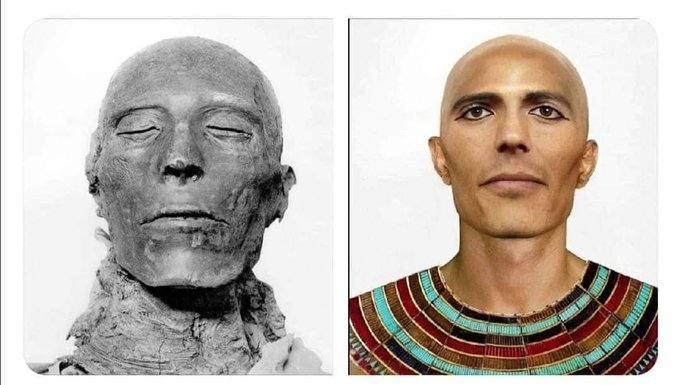The recent digital facial reconstruction of Pharaoh Seti I, who ruled Egypt from 1294 or 1290 BCE to 1279 BCE, offers an unprecedented glimpse into the visage of one of the 19th dynasty’s most influential rulers. Preserved in the Egyptian Museum in Cairo, Seti I’s mummy provides a tangible link to a pharaoh renowned for his efforts to restore Egypt’s greatness following the tumultuous reign of Akhenaten.
Reign of Prosperity and Stability
Seti I’s reign marked a golden era of prosperity and stability for ancient Egypt. His leadership brought about a renaissance of cultural and economic activity, which is vividly depicted in the grand monuments he commissioned, including the ethereal Abydos Temple. This period was characterized by a renewed sense of dominance and creativity that permeated the entire kingdom.
Military and Architectural Contributions
Known for his military prowess, Seti I undertook numerous campaigns to reclaim territories in Canaan and Syria, regions that had faced external threats from the Hittite state. His military victories are immortalized in grand scenes at the Amun temple in the Karnak temple complex. Furthermore, Seti I’s dedication to temple construction left a lasting architectural legacy. He was honored with a funerary temple at Qurna and initiated the construction of a magnificent limestone temple at Abydos, later completed by his son, Ramesses II.
Family and Personal Life
Seti I’s family played a significant role in his reign and legacy. His main consort, Tuya, bore him three children: Tia, Ramesses II, and Henutmire. Ramesses II, who succeeded Seti I, may have served as his co-regent. Tia married a high-ranking civil servant also named Tia, while Henutmire married her brother Ramesses II. This familial structure underscores the dynastic continuity and the strategic marriages that were typical of ancient Egyptian royalty.

Titles and Religious Dedication
Seti I bore multiple titles, reflecting his divine associations and royal duties. His Horus name, “Kanakhte-Khaemwaset Seankhtawy,” means “Strong Bull, Who Appears in Thebes and Sustains the Two Lands,” highlighting his role as a protector and sustainer of Egypt. His prenomen, “Menmaatre,” signifies “Established is the Justice of Re,” and his nomen, “Sety Merenptah,” translates to “Man of Set, beloved of Ptah,” illustrating his dedication to the gods Set and Ptah. These titles emphasize the religious and cultural significance of his reign.
Restoring Egypt’s Stability
After Akhenaten’s radical religious reforms, which caused significant social and political disruptions, Seti I, along with his predecessors Horemheb and Ramesses I, worked diligently to restore stability and traditional religious practices in Egypt. His determined efforts to reclaim lost territories and reinforce Egypt’s dominance were crucial in re-establishing order and prosperity in the kingdom.

Legacy and Historical Records
Although Seti I’s legacy has been somewhat overshadowed by the fame of his son, Ramesses II, his reign is well-documented and revered. Records indicate his rule lasted either 11 or 15 years, with his accomplishments in military and architectural domains well recorded. The absence of records for his final four years is improbable given the otherwise detailed accounts of his reign.
Digital Reconstruction and Preservation
The digital facial reconstruction of Seti I allows modern audiences to connect with one of ancient Egypt’s most significant rulers in a profoundly personal way. This reconstruction, based on his well-preserved mummy, provides a lifelike representation that enhances our understanding of his appearance and the era in which he lived. Such efforts underscore the importance of preserving and studying ancient artifacts, ensuring that the rich history of pharaohs like Seti I continues to captivate and educate future generations.
